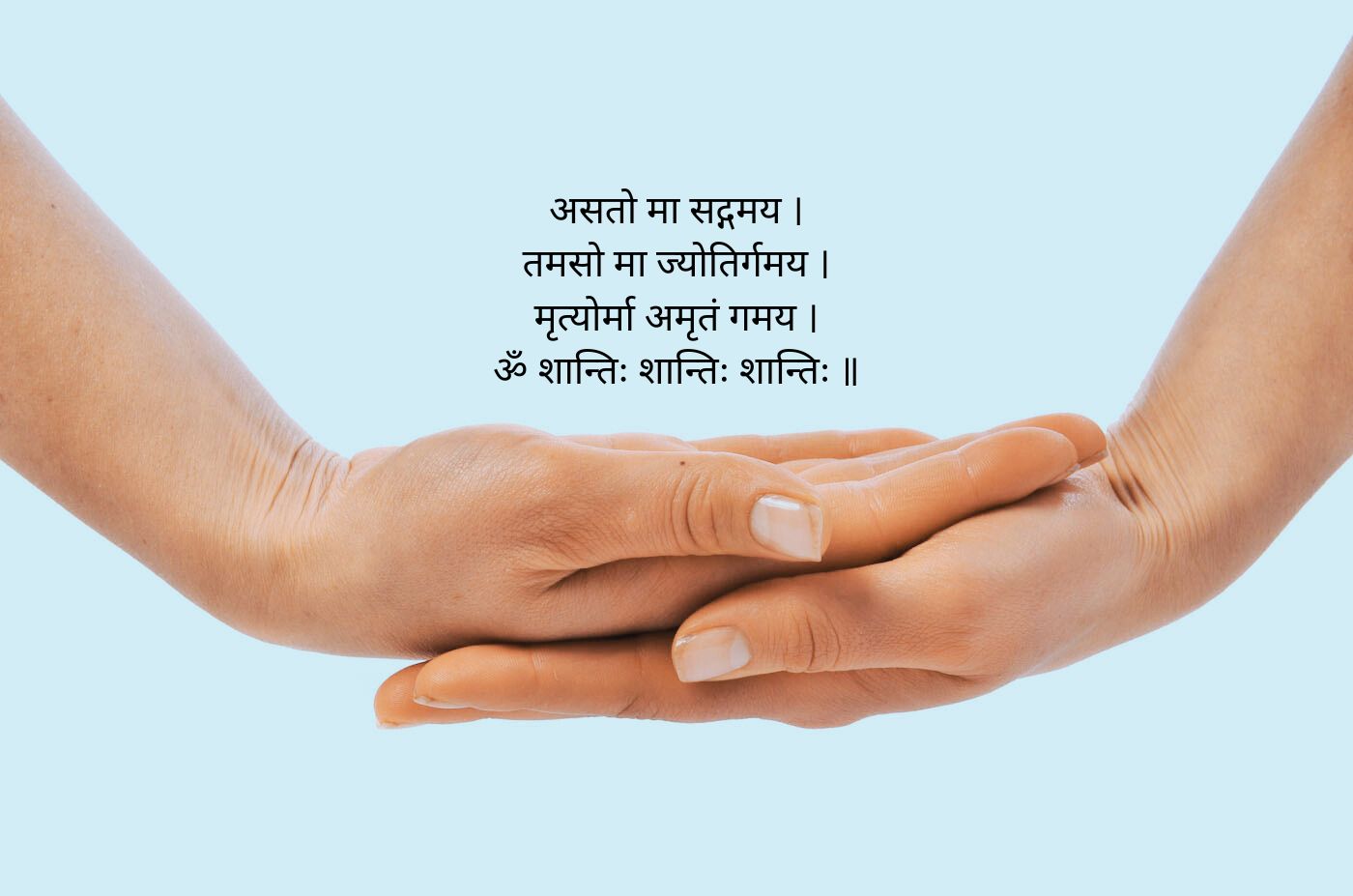This Sanskrit mantra is often heard at the beginning and closure of yoga classes and practices. What exactly does it signify? “Asato Ma Sadgamaya” is a mantra with deep spiritual significance for practitioners. It is often recited initially or during religious rituals and yoga sessions, including meditation practices. The mantra originates from the Brihadaranyaka Upanishad, considered one of the most ancient and essential Upanishads, or Hindu texts. This Upanishad is a part of the Shukla Yajurveda, which predates the Upanishads and is said to have been composed around 700 BCE. The Upanishad has six chapters named after Aranyaka, or the forest.
In order to understand the sacred mantra, it is essential to understand the context of the Upanishad. The Brihadaranyaka Upanishad discusses philosophical and metaphysical concepts about exploring the Nature of Reality, the Atman (the Self), and the Ultimate Reality or Brahman. Essentially, these concepts have a theme of interconnectedness, utilizing devotion as an instrument of the Divine. The Brahman, or the Ultimate Reality, is unchanging, ever-present, all-pervading, and the essence that underlies existence. The Atman is the Nature of the individual Self, which is no different from the Ultimate Self’s relationship to the Brahman. This particular Upanishad addresses the concept of karma as to the cycles of birth, death, and rebirth, often known as Samsara, and also expounds techniques for realizing our True Nature through liberation or Moksha.
Now, let us look at the mantra in depth. Asato ma means “lead me from the unreal” – this signifies a request to guide one from the unreal to the Real, a movement away from illusion and falsehood, including the temporary and the transient, to that which is Real. Sadgamaya translates as “lead me to the Truth” – the request continues to desire and attain correct knowledge and wisdom about the Ultimate Reality or the all-pervasive, unchanging Truth. “Tamaso ma jyotirgamaya” is the request to lead the individual from darkness to light. “Mrityorma amritam gamaya” is the request to lead one from death to immortality. Maharishi Patanjali has stated that the root issue of all suffering is ignorance, and this is what a Sadhaka or seeker requests to overcome and transcend via this mantra.
The mantra is chanted for one who seeks to realize his/her true Nature, disentangle oneself from the default cycle of birth and death, and, therefore, reach immortality, where karmic bonds do not need to be worked out anymore. The mantra is not about making deals with the Divine but complete surrender, leaving oneself open to being guided by Grace. The state of Moksha is immortality, and the physical body will have become part of the Earth and other elements gathered during life. At the same time, the Atman—the imperishable component—continues to live.
The last line of the mantra, “Aum shanti, shanti, shanti,” signifies repetition that may there be peace. This is chanted three times for emphasis and symbolically evokes peace in waking, sleeping, and dream states. This is a powerful little mantra to start and end practices in a yogic context. This invocation for guidance is often accompanied by Guru Pooja, where the presence of Guru(s) is requested to see the Sadhaka through their sadhanas or practices with ease. The mantra is an intention that cultivates spiritual awareness in a seeker, allowing the seeker to focus and not get distracted and derailed. This mantra is chanted at the beginning and end of practices, providing a cocoon to the seeker aiming for freedom from the samsaric cycles.
The mantra is a powerful tool to demolish or dissolve our tiny Self and become the hand of the Divine. Practitioners either hold hands at the heart center—Namaskar or Anjali mudra—or with the right palm on top of the left palm loosely placed on the lap—often known as Dhyana or Bhairava mudra. Repetition of mantras during practices proves fruitful, providing an instant shift in attitude as one embarks on their sadhana. Proper recitation in Sanskrit is essential, and genuine guided instruction is readily available for those seeking to deepen their spiritual connection and oneness with the Divine.
Image credit: Satya live yoga
